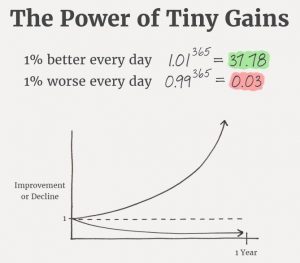Restore: The Bodyweight Strength Program
Exercise Range-of-Motion and Timing
 I’ve mentioned Range-of-Motion (ROM) within each exercise a little bit to this point, so let’s detail this a bit more so you have a good understanding.
I’ve mentioned Range-of-Motion (ROM) within each exercise a little bit to this point, so let’s detail this a bit more so you have a good understanding.
The amount of range of motion (ROM) you use for each movement naturally has a dramatic impact on how easy or how hard that movement will be, yes? This is one of those key benefits to bodyweight training that is central to it, that makes it so valuable and challenging too!
Generally, with push up and squatting type movements the EASIER portion of the movement is near the top and the HARDER portion is near the bottom.
For pull up or chin up type movements as well as glute bridge type movements, the EASIER portion is near the bottom and the HARDER range is near the top.
To summarize:
1. Pushing and squatting: easier near the top and harder near the bottom.
2. Chinning up, pulling up, and glute bridging: easier near the bottom and harder near the top.
Can You Perform Partial Range-of-Motion Variations?
If you want to make any exercise EASIER, you need to limit the range of motion to the easier portions of the movement, and if you want to make it harder, you can focus in on and limit the range of motion to the harder portions of the movement. We will focus in on these principles in a very specific way with bodyweight training!
Get ready to explore different partials at all these ranges of motion: Easier ROM partials, Full ROM, and Harder ROM.
Now I know you’re thinking that this is getting complicated, and it really shouldn’t be, so don’t
What About TIMING?
As you read through the description of different training levels one through four, I’m sure you noticed the reference to timing. By timing, I mean 5″, 2″, 5″, as an example. So, let’s discuss!
Let’s first acknowledge that if you’re going to move slowly, it will help to have a specific time target to aim for. That’s what I am providing for you!
Let’s also acknowledge that you can change the amount of resistance and difficulty of an exercise by changing the time spent at or near where the muscles meet the greatest OR the least resistance.
With me so far?
For each level one to four, I am specifying a specific timing for all exercises as a starting point. As you gain experience and get stronger, you can change and alter this (all the while, increasing time under load!) but the timing guidance I’ve provided is a good starting point.
For example, for Level ONE:
* Each repetition should take approximately 5 seconds in each direction.
* You will pause at the easier range of motion for 2 seconds.
For Level TWO:
* Each repetition should still take approximately 5 seconds in each direction.
* But, you will now pause at the more difficult range of motion for 2 seconds.
And so on and so forth, all of the way to Level FOUR.
Take a minute to listen in to the video where I will discuss these principles in detail!
If you don’t train very hard, you won’t give your body the impetus it needs to adapt and change, it’s that simple.
